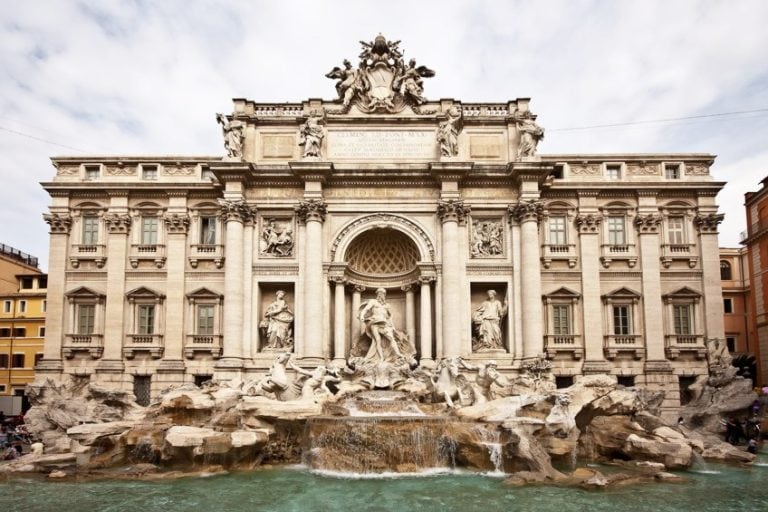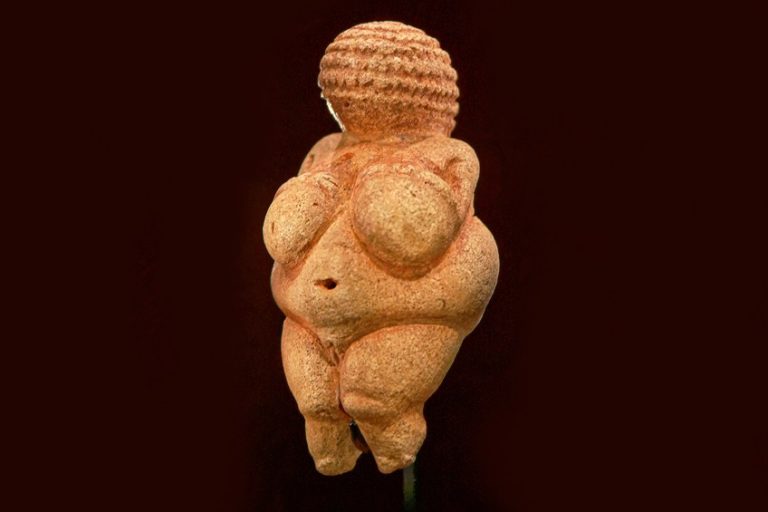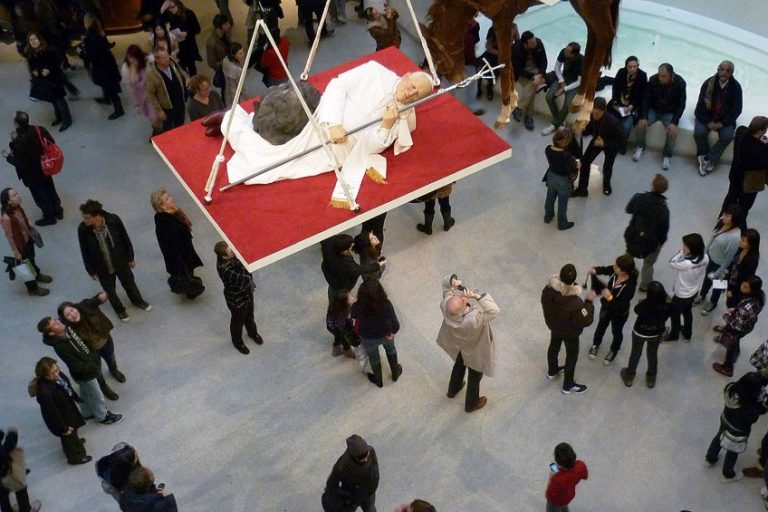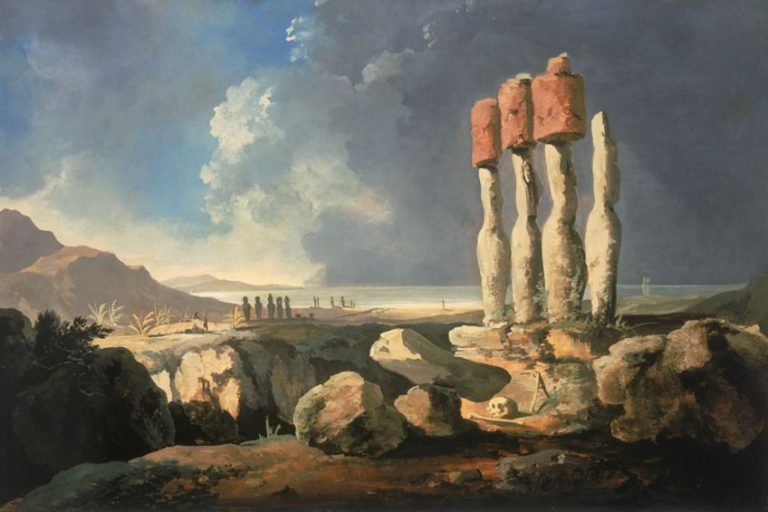Martin Luther King Statue in Boston – Analysing the Famous Work
Which sculpture created immense controversy in 2023 and why? Unveiled in January 2023, The Embrace is a massive bronze monument located in the Boston Commons in honor of the esteemed Nobel Peace Prize recipient, Martin Luther King Jr. Since the installation of the work, the sculpture seemed to garner both admiration and criticism from the public for its form, as well as being misconstrued and severely criticized by relatives of Coretta Scott King. In this article, we will introduce you to the sculpture and its maker, including the true meaning of the work and its recognition in current society.
Representing Martin Luther King Jr. in Art
Situated on America’s first public park, the towering sculpture displaying a moment of affection between the prolific activist Martin Luther King, Jr. and his wife Coretta Scott King, was revealed to the public on 13 January 2023. Since then, it has been criticized and praised for its representation of the activist’s legacy, identified by Coretta’s cousin as “an insult to Black people everywhere”. A severe criticism, the sculpture has also received recognition for its depiction of a moment of affection shared between the couple, sourced from a famous photograph that captured Martin Luther King, Jr. embracing his wife just after he had won the Nobel Peace Prize in 1964. Before we dive into the Martin Luther King statue in Boston, we will first take a look at the legacy of Martin Luther King, Jr., as portrayed in art and sculpture leading up to The Embrace by American sculptor Hank Willis Thomas.

Born in 1929, Dr. Martin Luther King, Jr. became a prominent civil rights leader in the 1950s and 1960s, who advocated for non-violent resistance against racist regimes and systems of oppression that were evident in the United States at the time. One of the most important points made by the activist was the belief that non-violent resistance could only be successful if one’s oppressor already possessed a “degree of moral conscience”, thus cementing a vital component of resistance. As a result, millions of people across the globe were inspired by the words and actions of the activist, including artists who took to sculpture to memorialize his legacy. The Martin Luther King, Jr. Memorial was established in 2011, which saw in its formal dedication, the attendance of former United States President Barack Obama. Among the most famous sculptures of the icon include the Stone of Hope by Lei Yixin, which was inspired by King’s I Have a Dream speech.
Another important artwork is the inscription wall, which displays inscribed quotes from King’s notes, sermons, and speeches that were selected by figures like Maya Angelou and Henry Louis Gates, with other quotes added to the Stone of Hope.
Hank Willis Thomas
In 2023, Hank Willis Thomas unveiled an abstract sculpture titled The Embrace, which was derived from the famous image of King and his wife sharing an endearing moment of support, joy, and celebration. The sculpture was placed on the Boston Common in Massachusetts, where it became the subject of controversy. Hank Willis Thomas is a Brooklyn-based conceptual artist who is widely recognized for his photography that addresses identity politics among popular culture and racial identity among other key themes. Working across a variety of media, Thomas is associated with prestigious galleries such as Goodman Gallery and Pace Gallery, that capture the essence of his work through painting, sculpture, and installation.

The Embrace (2023) by Hank Willis Thomas
| Artist Name | Hank Willis Thomas (1976 – Present) |
| Date | 2023 |
| Medium | Bronze |
| Dimensions (cm) | 609.6 x 975.3 |
| Where It Is Housed | Boston Common, Massachusetts, United States |
So, what was the intention of the sculpture, and what were the ramifications of Thomas’ choices in representing King’s legacy in this manner? Let us start with the sculpture. The work was crafted from around 19 tons of bronze and measures just over six meters tall, meaning that the artwork will certainly be noticed by all. Situated in the Boston Common, the memorial sculpture rests on the first public park in America and was selected as a site for its affiliation with King and the activist’s cause, which pinpointed Boston and called on the city to “live by its highest ideals”. According to Thomas, the intention behind the work was to provide a different perspective on the representation of King’s legacy, such that it avoids the oversimplification of his cause and what he stood for.
The park itself possesses a history of more than 400 years, where people once congregated for civic meetings.

Analyzing the Controversy of The Embrace
So, if the sculpture was intended to honor the legacy of a civil rights icon, why did it become controversial? The sculpture itself was placed in a city that has a long-standing history of being slow to catch up with societal and racial ideals reflected by other American cities and states that recognize the need for an equitable society. In other words, the history of racism in Boston remains a prevalent vice that highlights the potential of artists, as seen in The Embrace, to potentially overlook such truths despite the seemingly “advanced and equitable” society that exists.
What made the sculpture particularly controversial were the comments and choice of abstracted representation of the embrace that, although created with good intentions, was also perhaps created with rose-colored glasses.
Many, however, chose to gloss over the artist’s motivation and intent, overlooking the notion that King’s legacy could be understood in terms of the sense of community, family, and love expressed in an embrace. The monument was identified as a homage to King’s time spent in Boston, which coincided with the period when the activist fell in love with Coretta. Thomas used the embrace and the symbolism of the gesture to point society towards the idea of a collective action that could be prioritized over the idyllic view of a single hero. The abstraction of the form further invited curiosity, however, it seemed to have the opposite effect since people started identifying the form with similarities in human genitalia. The sculpture can also be viewed from multiple angles and as such, cannot be controlled in terms of how people perceive the artwork. The risky aspect of creating such a work of large proportions rested in the fact that it was abstracted, with a form that could be interpreted in more than one way.
The structure itself contains four intertwined arms that were part of a concept that Thomas had been working on for many years. The story of King meeting Coretta is one that led to the solidification and action in moving forward with creating a community and movement that inspired change. Some also believe that it was King’s encounter with Coretta, while studying at Boston University, that led to his involvement in an activist group in Boston, which fostered the couple’s development of the philosophy of nonviolent resistance.

Despite the legacy of Martin Luther King, Jr., Thomas’ sculpture was largely viewed in light of its contemporary standing, in a society that focused on the descriptions and immediate visuals of the work rather than its context. The reaction toward the sculpture in January was described as “outrage” across the Internet, which led to Seneca Scott, a cousin of Coretta and current activist, identifying the work as “an insult” to Black communities around the world. The activist expressed his frustration and dissatisfaction with the work as originating from the “insidiousness of Astro-turfed ‘woke’ movements that have come to dominate Black America”.
Rather than focusing on the history associated with the monument, many have viewed the work in light of its controversy, thus posing more questions about the use of prominent icons and their legacies in contemporary art and the acknowledgment of such works in the context of complex racial dynamics in cities like Boston. Another observation highlighted about the work was the symbolism of the embrace as the arms in the sculpture seemed to mirror the way Coretta carried King’s body on her shoulders after he was assassinated.
The work proved effective in terms of highlighting the underlying contributor to King’s legacy, as a figure propped up by not only his philosophies and beliefs in advocating for civil rights among people of color but also due to his family and community who supported him.
The Significance of The Embrace by Hank Willis Thomas
In many ways, The Embrace has become a contemporary symbol of how one can adjust one’s perspective to view such legacies beyond the skewed idea of an independent hero who single-handedly led the civil rights movement. According to Thomas, his vision for the sculpture was cemented after viewing the “warmth of the hug”, which allowed him to recognize the strength of Coretta, whose embrace was perhaps with King all along, throughout his challenging days. The sculpture beckons all to entertain the notion of collective power, mirrored by the continuation of King’s legacy even after his assassination. Thomas further stated that the sculpture was “a call to love for everyone to embrace someone else and to honor them by stepping into their power, their beauty, and their message”.

The message embedded in The Embrace evokes the potential and the importance of recognizing such potential in each other, especially in cases that require collective action. While the message of potential, compassion, and collective action is strong in the sculpture, the image of Martin Luther King, Jr. continues to shift. In May 2023, there had also been an incident of vandalism against an MLK statue in San Bernardino, which had its hand sawed off by vandals. Despite the incidents that reflect strong political opinions and perhaps an intense disrespect for the image of King in such instances, the legacy of King remains influential.
The powerful legacy of Martin Luther King Jr. has left a profound mark on the complexities of representation, which The Embrace by Hank Willis Thomas has highlighted. We encourage you to continue thinking critically about themes of representation, identity politics, the translation of such into artworks, and the ways it can be read in our current contemporary context.
Frequently Asked Questions
Who Created the Martin Luther King Statue in Boston?
The famous Martin Luther King statue in Boston, entitled The Embrace (2023), was created by the conceptual artist Hank Willis Thomas and was unveiled at the Boston Common Park in January.
Why Was the Martin Luther King Statue in Boston So Controversial?
In 2023, the Martin Luther King statue in Boston was identified as controversial after its artist, Hank Willis Thomas, represented an abstract form of an embrace that was shared between Martin Luther King Jr. and his wife, Coretta, after receiving the Nobel Peace Prize. The sculpture was particularly controversial for bearing resemblance to human genitalia and criticized for its rose-colored glasses perspective, considering the context of Boston and its history of racial tension.
What Does the Martin Luther King Statue in Boston Symbolize?
The famous Martin Luther King statue in Boston symbolizes the collective support offered by Martin Luther King Jr.’s community, which was embodied by the gesture of an embrace, inspired by a photograph depicting the activist hugging his wife, Coretta Scott King. The artwork is also said to represent the potential of all people to unite in moments that need collective action and embrace the powerful messages and philosophy of Martin Luther King Jr.
What Photograph Was The Embrace Based On?
The famous Boston sculpture titled The Embrace (2023) was based on a photograph that captured a moment after Martin Luther King Jr. won the Nobel Peace Prize. The image was taken in 1964 and depicts King and his wife in an embrace.
Who Commissioned The Embrace Sculpture?
The Boston Foundation commissioned the sculpture under the program Embrace Boston, which was founded in 2018. The artwork was paid for by private donations, as mentioned in a statement by the director Imari Paris Jeffries.
How Much Is The Embrace Sculpture Worth?
The Embrace (2023) sculpture by Hank Willis Thomas is worth around $10 million and is considered to be the largest sculpture in the United States that is dedicated to promoting racial equity.
Jordan Anthony is a film photographer, curator, and arts writer based in Cape Town, South Africa. Anthony schooled in Durban and graduated from the University of the Witwatersrand, Johannesburg, with a Bachelor of Art in Fine Arts. During her studies, she explored additional electives in archaeology and psychology, while focusing on themes such as healing, identity, dreams, and intuitive creation in her Contemporary art practice. She has since worked and collaborated with various professionals in the local art industry, including the KZNSA Gallery in Durban (with Strauss & Co.), Turbine Art Fair (via overheard in the gallery), and the Wits Art Museum.
Anthony’s interests include subjects and themes related to philosophy, memory, and esotericism. Her personal photography archive traces her exploration of film through abstract manipulations of color, portraiture, candid photography, and urban landscapes. Her favorite art movements include Surrealism and Fluxus, as well as art produced by ancient civilizations. Anthony’s earliest encounters with art began in childhood with a book on Salvador Dalí and imagery from old recipe books, medical books, and religious literature. She also enjoys the allure of found objects, brown noise, and constellations.
Learn more about Jordan Anthony and the Art in Context Team.
Cite this Article
Jordan, Anthony, “Martin Luther King Statue in Boston – Analysing the Famous Work.” Art in Context. January 16, 2024. URL: https://artincontext.org/martin-luther-king-statue-in-boston/
Anthony, J. (2024, 16 January). Martin Luther King Statue in Boston – Analysing the Famous Work. Art in Context. https://artincontext.org/martin-luther-king-statue-in-boston/
Anthony, Jordan. “Martin Luther King Statue in Boston – Analysing the Famous Work.” Art in Context, January 16, 2024. https://artincontext.org/martin-luther-king-statue-in-boston/.










